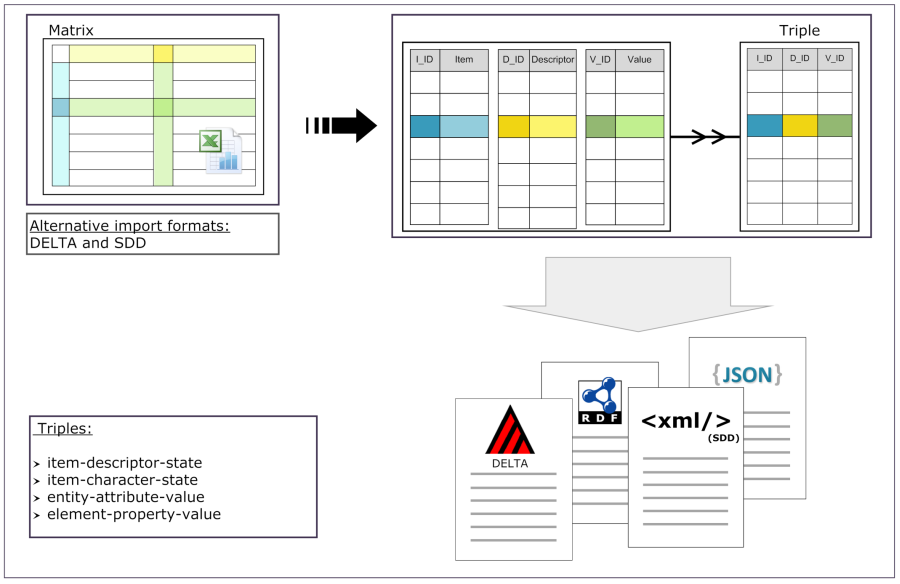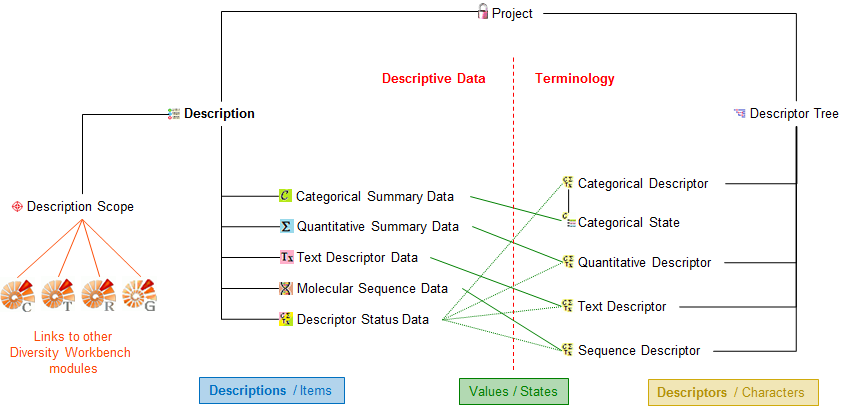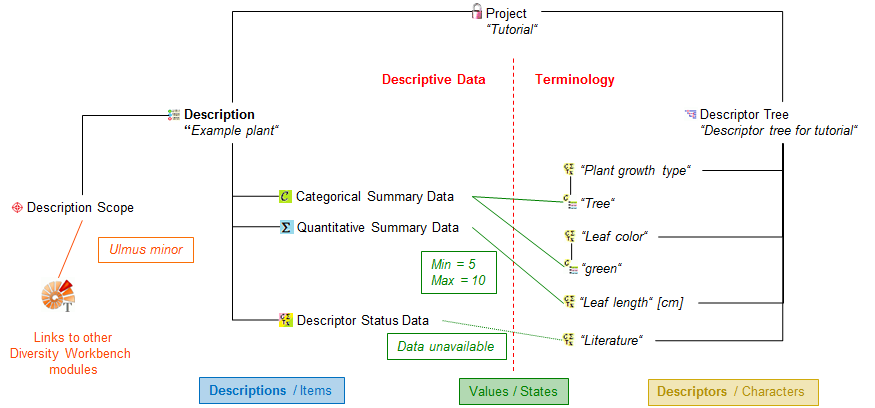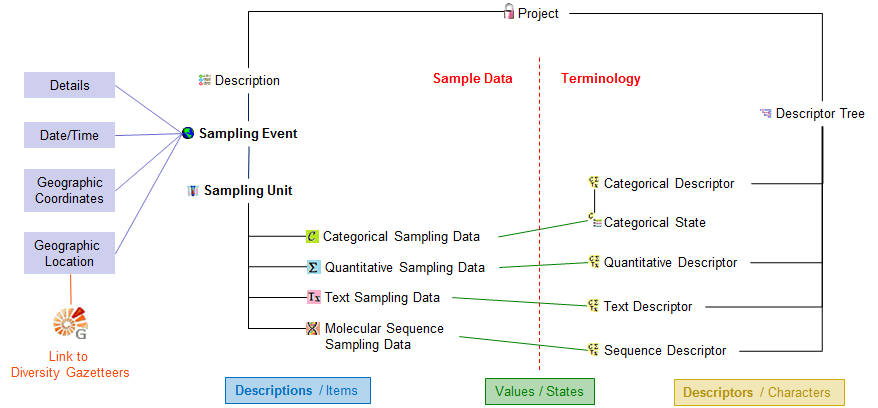 DiversityDescriptions
DiversityDescriptions
 DiversityDescriptions
DiversityDescriptions
DiversityDescriptions (version 4) is part of the database framework Diversity Workbench. Each DWB module is devoted to a specific data domain. The domain of DiversityDescriptions covers the knowledge about descriptions of organisms and descriptions of any other item/ element/ entity which are object of diversity research. It can be used to describe individual organisms, research items/ objects (e.g. specimens, observation and measurement events, plots) as well as taxa, syntaxonomic entities (e.g. species, plant-sociological entities, ecosystems).

The image below gives a rough overview how the triple structure is represented in the data tables of DiversityDescriptions. A detailled database diagram including all tables and their data columns can be found here. At the right side you can see the descriptors and categorical states that build the "descriptive terminology". Currently four descriptor types are supported:
While the first three descriptor types are most commonly known in the context of descriptive data, the molecular sequence descriptor is designed according the SDD standard of TDWG. (An alternate entry point to SDD can be found here.) In most cases molecular sequence data may be mapped to text descriptor data, e.g. for export to a DELTA file.

At the left side of the image above there are the "descriptive data", which consist of the single description or item and the associated summary data. In analogy to the four descriptor types there are categorical and quantitative summary data, text descriptor data and molecular sequence data that reference the corresponding descriptor and store the actual values for the item (green lines). For an item description scopes can be specified, e.g. taxon names or specimens, which may optionally be linked to the corresponding module of the Diversity Workbench (orange lines at the very left). Additionally for each descriptor a data status may be specified, e.g. to indicate that a certain descriptor/character should be specified but actually no data are available (Descriptor Status Data).
To make this very abstact overview a little bit more tangible, find in the image below a tiny example taken from the tutorial. The "Example plant" is a "Tree" and has the "Leaf color" "green" (Categorical Summary Data). Its "Leaf length" is between 5 and 10 cm (Quantitative Summary Data) and for "Literature" (currently) no data are available. Additionaly the taxon name "Ulmus campetris" has been associated to the "Example plant" (Description Scope).

DiversityDescriptions keeps only descriptive data. Data of other realms like e.g. taxonomy are handled in separate modules. For an overview of the available modules see Diversity Workbench. DiversityDescriptions might also be used as a stand-alone application.
Besides the descriptive data that represent the summarized data e.g. for a certain species, Diversity Descriptions provides the feature of appending Sample Data to each description.

To each description or item several "sampling events" may be appended, which build the anchor for the "sampling units". The sampling event holds additional data like the date and time or a time span when the data were collected, the geographic location and coordinates. The sampling unit represents a tuple of values that belong to an individual probe, e.g. an evaluated organism (see image above). The sample data may be exported together with the descriptive data to the SDD format, which provides full sample data support. Optionally sample data may be exported to the DELTA format, where each sampling unit is mapped to a separate item.
DiversityDescriptions 4 is based on Microsoft SQL-Server (version 2012 or newer recommended) and the .Net Framework, Version 4.8.
For licence and copyright see the licence section.
Even if you are already familiar with other Diversity Workbench modules, it is strongly recommended to take a look into the Tutorial to get an overview of the main features of DiversityDescriptions.